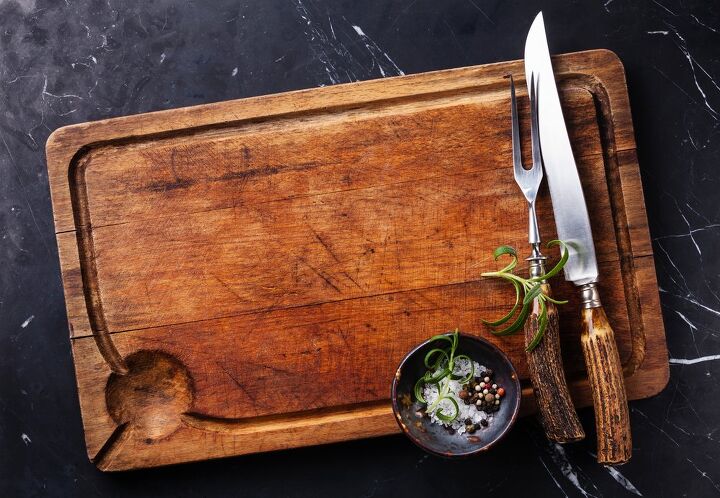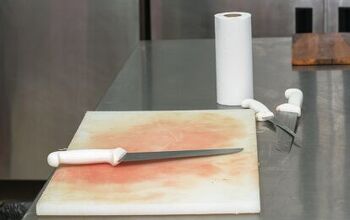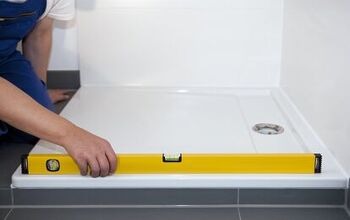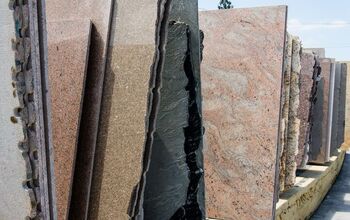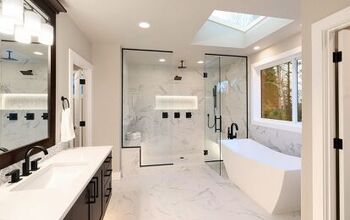Standard Cutting Board Sizes (With Drawings)

Cutting boards are a popular tool you’ll find in any kitchen. Whether you use it to cut fresh fruit, meat, cheese, or slice and dice veggies, it’s often essential in meal prep. Standard cutting board sizes range from small and slim to extra-large, so it’s easy to find one that works well for your needs.
Most cutting boards are rectangular, coming in standard sizes ranging from 6” x 9” to 20” x 30”. Some of the most common sizes are 12”x 18” and 18” x 24”. Plastic and silicone cutting boards can be very thin, but heavier materials like wood or marble should be thicker. These boards usually are between 1-¼” and 2 inches thick.
Many people choose to have more than one cutting board, using different boards for meat and produce, etc. This helps avoid cross-contamination and minimizes having to wash the board before you cut each different food type. No matter your preference, getting the right size cutting board makes all the difference.
A Look At Standard Cutting Board Sizes
You can find standard cutting board sizes from small, around 4” x 6” to extra-large, 20” x 30”. Most cutting boards are rectangular, although there are round styles available.
Round boards are usually between 10 and 16 inches in diameter. However, round boards are more challenging to work with, making them less popular than rectangular ones. Although, round boards make an excellent board for cutting a pizza.
Standard rectangular cutting boards come in a wide assortment of sizes. The most popular dimensions are 12” x 18” and 18” x 24”, ideal for most meal prep.
But, you can get smaller sizes, great for chopping up single-serve snacks or herbs. Extra-large sizes, like 18” x 30” and 20” x 30”, would more likely be in commercial kitchens.
List of the Most Popular Standard Cutting Board Sizes
- 4” x 6”
- 5” x 7”
- 6” x 9”
- 8” x 10”
- 8” x 12”
- 10” x 15”
- 11” x 14”
- 12” x 18”
- 15” x 20”
- 18” x 24”
- 18” x 30”
- 20” x 30”
Note that sometimes the exact dimensions of the cutting board might be slightly less than the labeled size. It depends on how the manufacturer decides to label the board. Sometimes it’s easier to put 12” x 18” than 12.01” x 17.89”, etc.
What Standard Cutting Board Sizes Sell the Most?
The most popular size cutting board in most home kitchens is 12” x 18”. You can find this size in many materials, including plastic, wood, and stone. They typically range between $12 and $40, depending on the thickness and material.
The second most popular size is 18” x 24”. You can also find this size board in various materials, running between $10 and $50.
The less expensive styles are usually thinner, flexible boards. You can also find cutting boards over $100 or $200 if you opt for high-end materials or unique designs. It’s also common to find multiple sizes of cutting boards sold together in a pack.
Usually, the pack will have one smaller and one larger board or three different sizes. Often, two of these sizes would be the 12” x 18” and the 18” x 24”.
What Are Typical Cutting Board Thicknesses?
Cutting boards are usually between 1-¼-inch thick and 2 inches thick. If you use a wooden board, the thicker, the better. The extra thickness keeps it from wearing down quickly and can prevent the wood from warping. However, a silicone, plastic, or flexible mat can be thinner.
Plastic cutting boards could be only ½-inch thick. Flexible mats are extremely thin to maintain their flexibility. The thickness won’t really affect how the board functions, but more so how long it lasts.
How Thick Should Your Cutting Board Be?
If you’re using a stone or wood cutting board, it should be at least 1-¼ inches. Wooden cutting boards that are two inches thick are ideal to maintain their integrity.
But, more importantly, make sure to choose the right size for what you’re cutting. Even though smaller cutting boards might be easier to store, they can be impractical for larger prep jobs.
What Are Good DIY Cutting Board Dimensions?
A popular beginning DIY woodworking project is making your own cutting board. Some good sizes for a DIY board allow you to use them for multiple purposes. Therefore, opt for medium to large size boards, like 10” x 14”, 12” x 18”, or 18” x 24”.
Explainer Video: DIY Cutting Board with Minimal Tools
What Sizes Are End Grain Cutting Boards?
End-grain wood cutting boards come in the same sizes as other styles of cutting boards. The difference is that these boards usually feature a decorative checkerboard pattern. They also consist of self-healing wood fibers, making them a great choice for knives.
End-grain cutting boards show fewer scratches, but they also are usually some of the most expensive. Not to be confused with end-grain boards are edge-grain cutting boards. These boards are very durable and easy to maintain.
They are also more affordable than end-grain cutting boards. However, they will show marks much more easily, and no matter how well-maintained, the marks won’t go away. Edge-grain cutting boards also come in the same sizes as other cutting boards.
Which Style Cutting Board Is Best?
When you’re choosing the best style of cutting board, it often depends on what you’re using it for and your budget. You also should pay attention to required maintenance if you don’t want to deal with a lot of upkeep. Cutting boards come in a wide assortment of styles.
In addition to edge-grain and end-grain boards wooden boards, you can also find plastic, bamboo, and stone. You can also get silicone, rubber, and even glass cutting boards.
Pros and Cons of Different Cutting Boards
Plastic cutting boards are usually the least expensive and come in tons of different colors. They’re lightweight and easy to clean, but you should not use them with serrated knives.
Bamboo cutting boards are great for different types of knives and are very durable. However, they require a lot of maintenance. You usually need to oil them monthly with mineral oil.
Rubber cutting boards are extremely durable and excellent for knives; they’re also slip-resistant. However, they can be on the expensive side, and your style choices are limited.
For a more stylish cutting board, stone offers extreme durability and doesn’t show scratches. However, it can get very heavy and can even end up damaging your knives.
Glass boards will also dull knives and can make a lot of noise when you cut on them. But, glass boards are very easy to clean.
Silicone mats are flexible, making it easy to cut food, fold the mat, and dump the pieces into a bowl or pan. They come in a lot of colors and are easy to clean and store since they’re so thin. However, they will show lots of scratch marks and won’t last very long under sharp knives.
A Final Look at Standard Cutting Board Sizes
Having a good cutting board in your kitchen can make meal prep a breeze, but getting the right size is important. Standard cutting board sizes can be as small as 4” x 6” and as large as 20” x 30”. The most popular sizes are 12” x 18” and 18’ x 24”.
You want to match your cutting board size to what you’re cutting. Smaller sizes are great for single-serve snacks or chopping herbs. But you’ll want a larger size for prepping a meal. Other popular cutting board sizes are 10” x 15”, 11” x 14”, and 15” x 20”.
Decide what you’ll use the cutting board for, know your budget, and make sure you can maintain your cutting board. Following these tips will help you choose a style and size cutting board that’s sure to make the cut in your kitchen.

Stacy Randall is a wife, mother, and freelance writer from NOLA that has always had a love for DIY projects, home organization, and making spaces beautiful. Together with her husband, she has been spending the last several years lovingly renovating her grandparent's former home, making it their own and learning a lot about life along the way.
More by Stacy Randall



